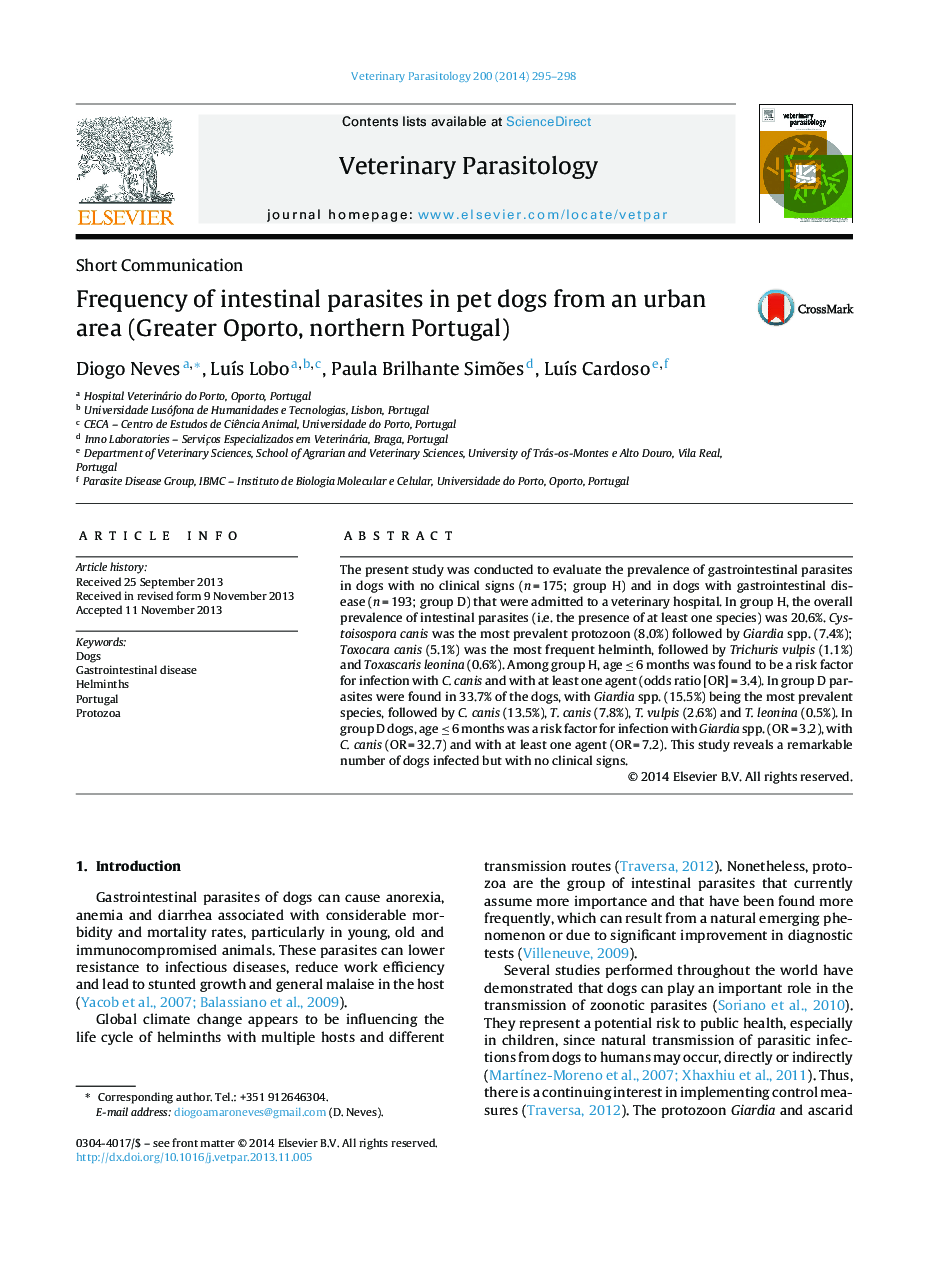| Article ID | Journal | Published Year | Pages | File Type |
|---|---|---|---|---|
| 2470004 | Veterinary Parasitology | 2014 | 4 Pages |
The present study was conducted to evaluate the prevalence of gastrointestinal parasites in dogs with no clinical signs (n = 175; group H) and in dogs with gastrointestinal disease (n = 193; group D) that were admitted to a veterinary hospital. In group H, the overall prevalence of intestinal parasites (i.e. the presence of at least one species) was 20.6%. Cystoisospora canis was the most prevalent protozoon (8.0%) followed by Giardia spp. (7.4%); Toxocara canis (5.1%) was the most frequent helminth, followed by Trichuris vulpis (1.1%) and Toxascaris leonina (0.6%). Among group H, age ≤ 6 months was found to be a risk factor for infection with C. canis and with at least one agent (odds ratio [OR] = 3.4). In group D parasites were found in 33.7% of the dogs, with Giardia spp. (15.5%) being the most prevalent species, followed by C. canis (13.5%), T. canis (7.8%), T. vulpis (2.6%) and T. leonina (0.5%). In group D dogs, age ≤ 6 months was a risk factor for infection with Giardia spp. (OR = 3.2), with C. canis (OR = 32.7) and with at least one agent (OR = 7.2). This study reveals a remarkable number of dogs infected but with no clinical signs.
